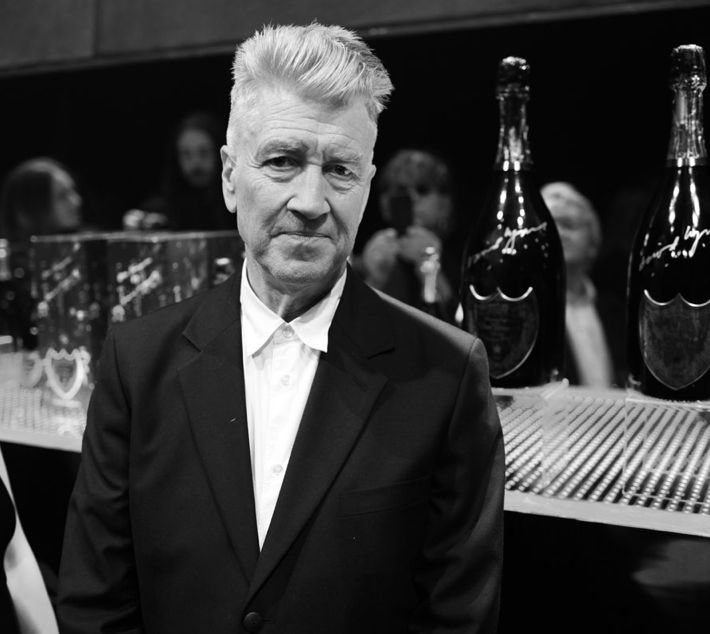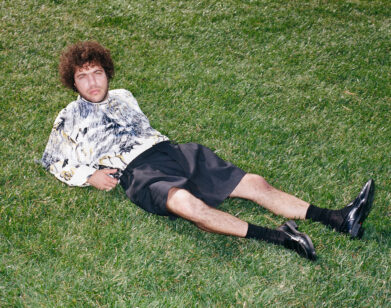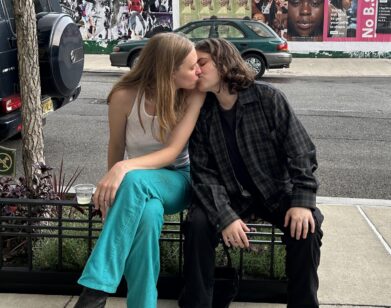The Surreal Careers of David Lynch

Last June in Los Angeles, director David Lynch threw the kind of party that only the man behind Eraserhead, Wild at Heart, Blue Velvet, and Twin Peaks: Fire Walk with Me would tackle. It had long dark hallways, sudden doors that opened into rooms threaded with laser beams, an eerie laboratory motif that made the passing hors d’oeuvres seem of an unsettling origin. And it had a lot of free champagne. That’s because the Californian director and recent design guru had teamed up with Dom Pérignon to design a special limited-edition bottle for their Dom Pérignon Vintage 2003 and Dom Pérignon Rose Vintage 2000. The resultant bottle shields and gift boxes play with light and dark, the same way Lynch’s films have routinely used lightness and darkness to weigh upon his actors and to build disquieting tensions in his environments. Lynch has become something of a second careerist. While we hope he doesn’t stop making films, he does seem particularly energized about his design work (and even his paintings, according to a recent LA solo exhibition).
My friend, the filmmaker Meredith Danluck, met me at the Chateau Marmont on the day after the party. It was bright out, and we wore sunglasses as we waited to speak with Lynch. He was not wearing sunglasses when we met him, in a small study in the hotel’s penthouse. His assistants acted like his clock—”we have to go in five minutes”—which left Lynch free to be timeless. He spoke with no rush. He seemed particularly taken with Danluck. The whole, very short interview had a wonderful transcendental feel about it, vague but enlightening, and when it was over Danluck and I took the dark elevator down and we couldn’t figure out if that was an interview or a short trip a mile off the ground. And then it occurred to us in the lobby, “Oh, that feeling? It’s because we’re just big dorky Lynch fans.”
CHRISTOPHER BOLLEN: In the last few years you’ve seemed to move away from films and into design and visual art—the interior of the Paris club Silencio, a recent show in LA of your paintings, your furniture collection, this bottle for Dom Pérignon…
DAVID LYNCH: I’m not really moving into anything, but people ask me to do things. Not that I would necessarily do anything people ask. But the owner of Silencio came to me and asked if I’d be interested. I had been making furniture for a long time, just for myself, so I said yes, and it was a very good process.
BOLLEN: How do you go from designing the interior a club to the exterior of a bottle?
LYNCH: It started with a photograph—the people at Dom Pérignon asked me to make a still photograph of a bottle for magazines. And it was interesting because I could experiment and they were happy to let me experiment. It turned into something they liked. That led to the design of a gift box and eventually the party we threw last night.
BOLLEN: In your films, you create very specific places and environments. So I suppose in a sense it’s a natural progression for you to move into three dimensions. Is it the same process to work on a film as it is to design objects?
LYNCH: It’s the same process. Building a set is like building a place, but it’s a temporary place, because sets usually get torn down. Kind of unfortunate. But it’s the same thing. You get an idea, and the idea tells you what the place feels like, looks like, and what goes where. You try to translate that idea as purely as possible.
BOLLEN: In your films, you usually start with a solid script, but I know you’re also a great believer in chance or surprise interventions that come up during shooting. Like the character of Bob in Twin Peaks, who was first just a technician accidentally caught in one of the frames. You ended up incorporating him into the story.
LYNCH: I follow a rigorous script until a happy accident takes it to a higher place. An accident that takes it to a lower place, you would not want to take.
BOLLEN: Have you ever incorporated an accident that took you to a lower place?
LYNCH: There are many, many things that can go bad for a while and then you rectify that and go forward. But the happy accidents are little gifts that happen along the way.
BOLLEN: So you don’t work in a linear way, where you know the ending of your films in advance?
LYNCH: Not necessarily. To make the script, you need ideas, and for me a lot of times, a final script is made up of many fragments of ideas that came at different times. Part seven of the puzzle came first, but part one didn’t come for a long time. You see what I mean?
BOLLEN: I think so.
LYNCH: Then you get all the puzzle parts together enough to say the puzzle is complete. It’s a script. In the process of realizing that, new ideas can come, one way or another. Through a happy accident, they just come to you. So I say a thing is not finished until it’s finished. There’s many times, partway through a film, when an idea comes, and I say, “How beautiful this is. This thing was not complete and look what’s happened, look what’s come along.” And it just came along at what might be called a strange time rather than a normal time.
BOLLEN: So you’re a director who relies on his instincts.
LYNCH: Instinct is getting hungry and eating. It’s intuitive. It’s an intuitively good feeling.
BOLLEN: But design, say for sets, must be relatively finished in advance. Can designing a set make for a happy accident?
LYNCH: A set is very magical. When I was working on Eraserhead, I had a job delivering The Wall Street Journal. Somewhere along the line, I realized that a set only has to look solid. And many places in my sets were paper-thin because I’d use wallpaper paste, flour, water, and The Wall Street Journal to make walls.
BOLLEN: Were those the papers you were supposed to be delivering?
LYNCH: No, I had extras. I didn’t steal them. I had 12 or 13 different papers each night. Those things add up.
BOLLEN: Meredith, you had a question you wanted to ask.
MEREDITH DANLUCK: I wanted to ask you about humor in your work. I know a lot of people get drawn into the darkness of your work, but I think there’s so much light.
LYNCH: Beautiful, yes. There’s humor. During the course of a day, some dark feeling comes, maybe some sadness comes, some thrill, some great happiness, some strange humor. Cinema can embrace all that in one story, just as the story of life. Humor is very interesting to me. My films are not comedies, but there’s comedy in them from time to time, absurdities, just like in real life.
DANLUCK: That’s one of the things that I’m drawn to about your work. As soon as you get pulled into one direction, one depth, there’s something else, whether absurd or beautiful, that springs you out of that. There’s a range of emotions, the light and the dark, literally, light and dark.
LYNCH: Oh, fantastic.
BOLLEN: I love the colors in so many of your films, like Wild at Heart and Twin Peaks: Fire Walk with Me. How do you figure out your color palette for each project?
LYNCH: Well, Eraserhead and Elephant Man were black and white. I’ll say black and white is much harder to light than color. Colors separate themselves, but, as an example, in Eraserhead, Henry Spencer, the main character, is laying on the bed and he’s wearing black pants and there was so much shadow behind him that the black pants disappear, like he has no legs. So, you have to rim light those black pants, and you start thinking like that. Nowadays, people shoot digitally and it’s all in color, but you press a button and it all goes to black and white. But it’s not lit for black and white. So, it’s a tricky thing. If you’re going do black and white, you better remember to separate things with light, because color ain’t gonna be there. Now I have to say when it comes to wardrobe, I work with Patricia Norris, and she has a great genius for a dressing a character so perfectly. On Blue Velvet, she wanted to know if she could do production design as well, so she did both. I think she did both with Wild at Heart too. So, Patty’s really great. I try to talk to her a bunch and put things in the script, but a lot of times, you’ll go to a location, and it’s another kind of gift because there’s something already there and you can’t believe how lucky you are. It’s all there for you, even more than what you wanted. There are so many things that happen. In Eraserhead, there were some sets, I’d open my eyes and then close my eyes and remember what it was supposed to be and the two were almost identical.






